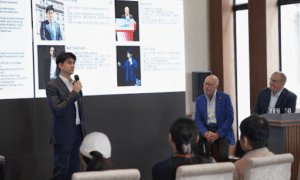When the roar of Formula 1 cars takes over the streets of Miami, it’s more than just a race—it’s an economic and cultural spectacle that transforms the city. From packed hotels and buzzing restaurants to the influx of global visitors, the F1 Grand Prix Miami is one of those rare moments where sports, business, and city planning intersect.
But behind the glitz and adrenaline lies a deeper story: how events like this reshape consumer behavior, traffic flow, and retail dynamics—often in ways that outlast the race itself. To dig deeper, we teamed up with MapZot.AI, a powerful AI-based location intelligence platform, to analyze the movement patterns, foot traffic surges, and hidden economic trends before, during, and after race weekend.
A Race That Goes Beyond the Track
- Foot traffic spikes weren’t limited to the track. In fact, neighborhoods as far as 10–15 miles from the Miami International Autodrome saw a sharp uptick in visitors, particularly in lifestyle centers and high-end retail corridors.
- Luxury QSRs and experiential dining saw a 22% rise in footfall across areas like Brickell and Wynwood even though they weren’t directly tied to the race venue.
- Hotel zones and hospitality pockets that had smart proximity to key access routes (rather than the venue itself) saw greater conversion rates and booking volumes.
These aren’t just interesting observations, they’re strategic insights for cities, businesses, and franchises looking to ride the wave of large-scale events.
In May 2025, Miami International Autodrome witnessed a massive visitor surge, and the data tells an incredible story.
Using insights from MapZot.AI, which tracks visitors within a 1-mile radius, we observed a dramatic spike of 42,000 visits on May 3rd, with total monthly visits reaching 355.6K.
Record Traffic Hits Miami on May 3
In May 2025, Miami International Autodrome witnessed a massive visitor surge, and the data tells an incredible story.
Using insights from MapZot.AI, which tracks visitors within a 1-mile radius, we observed a dramatic spike of 42,000 visits on May 3rd, with total monthly visits reaching 355.6K.
May 3rd, also known as Day 2 of the F1 Grand Prix weekend, marked one of the most active event days. This was when qualifying sessions and major fan experiences took center stage drawing 42,000 people to the area. May 3rd wasn’t race day but it was qualifying day, often considered the most exciting for F1 fans who want to witness drivers push their limits. The venue was also packed with:
Fan engagement zones
Brand activations
Hospitality lounges
Concerts and celebrity sightings
Cross Visit Patterns Around Miami F1 Grand Prix Venue
- 2100 NW 42nd Ave, Miami, FL (3.7% visits, 11.6 miles away): This airport-area location saw the highest share of visits, confirming that many attendees flew in or commuted long distances.
- Benihana – 347 Don Shula Dr, Miami Gardens (2.9% visits, 0.1 mi): Located just steps from the racetrack, this popular restaurant capitalized on its immediate proximity to the event.
- Chick-fil-A – Miami International Airport (2.6% visits, 11.6 mi): Another airport hotspot that shows how the F1 event boosted traffic at key travel hubs.
- Dunkin’ Donuts – NW 27th Ave, Miami Gardens (1.4% visits, 0.6 mi): A go-to for quick bites, this nearby Dunkin’ location captured race-day traffic effectively.
- Flanigan’s Seafood Bar & Grill – Pembroke Pines (1.6% visits, 8.8 mi): Despite being nearly 9 miles away, Flanigan’s attracted a noteworthy share of F1 attendees.
Insight:
Visitors didn’t just stick close to the track they explored, dined, and traveled far. From airport terminals to city restaurants, businesses across Miami saw a surge in traffic, underlining the regional economic impact of hosting a world-class racing event. The Grand Prix is more than a weekend spectacle. It’s a real-time demonstration of how people move, where they spend, and how cities can prepare—or miss out.
Understanding these patterns gives decision-makers a clear edge. Whether it’s optimizing marketing efforts, choosing new store locations, or creating better event-driven experiences, data-backed intelligence means smarter investments.
Takeaways From This Year’s Grand Prix Weekend
- Events like F1 reshape the urban landscape, even if temporarily.
- Businesses within proximity but not directly on site—can benefit significantly if positioned right.
- Location intelligence platforms like MapZot.AI are essential for unpacking these moments, uncovering overlooked hotspots, and planning better for next time.
As we look ahead to next year’s race, we’ll be keeping a close eye on how these patterns evolve and how businesses continue to turn big events into bigger opportunities.


























